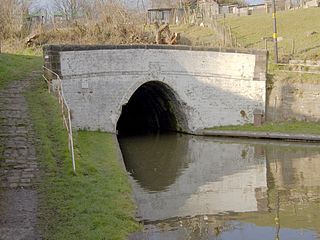
1659 (MDCLIX) was a common year starting on Wednesday of the Gregorian calendar and a common year starting on Saturday of the Julian calendar, the 1659th year of the Common Era (CE) and Anno Domini (AD) designations, the 659th year of the 2nd millennium, the 59th year of the 17th century, and the 10th and last year of the 1650s decade. As of the start of 1659, the Gregorian calendar was 10 days ahead of the Julian calendar, which remained in localized use until 1923.
The Battle of Nantwich was fought on 25 January 1644 in Cheshire during the First English Civil War. In the battle, Sir Thomas Fairfax in command of a Parliamentarian relief force defeated Lord Byron and the Royalists.

Northwich is a market and port town and civil parish in the unitary authority of Cheshire West and Chester in the ceremonial county of Cheshire, England. It lies in the heart of the Cheshire Plain, at the confluence of the rivers Weaver and Dane. The town is about 18 miles (29 km) east of Chester, 15 miles (24 km) south of Warrington, and 19 miles (31 km) south of Manchester.

Barnton is a civil parish and village, just outside the town of Northwich, in the unitary authority of Cheshire West and Chester and the ceremonial county of Cheshire, England. It lies north and east of the Trent & Mersey Canal which goes through two tunnels to the west of the village.

George Booth, 1st Baron Delamer, was an English landowner and politician from Cheshire, who served as an MP from 1646 to 1661, when he was elevated to the House of Lords as Baron Delamer.

Tatton is a constituency in Cheshire represented in the House of Commons of the UK Parliament since 2017 by Esther McVey, a Conservative.

Winnington is a ward and northwestern suburb of the town of Northwich, in the Cheshire West and Chester borough of Cheshire, England.

Sir Thomas Myddelton (1586–1666) of Chirk Castle, Denbighshire, was an English-born Welsh landowner, politician, and military officer. He became a Member of Parliament in 1624; during the First English Civil War he was a prominent Parliamentarian general, despite having no previous military experience.

The Second Battle of Middlewich took place on 26 December 1643 near Middlewich in Cheshire during the First English Civil War. A Royalist force under Lord Byron defeated a Parliamentarian army commanded by Sir William Brereton.
Events from the year 1659 in England.

Cheshire West and Chester is a unitary authority area with borough status in Cheshire, England. It was established on 1 April 2009 as part of the 2009 local government changes, by virtue of an order under the Local Government and Public Involvement in Health Act 2007. It superseded the boroughs of Ellesmere Port and Neston, Vale Royal and the City of Chester. The remainder of the ceremonial county of Cheshire is composed of Cheshire East, Halton and Warrington. Cheshire West and Chester has three key urban areas: Chester, Ellesmere Port and Northwich/Winsford.
The history of Northwich can be traced back to the Roman period. The area around Northwich has been exploited for its salt pans since this time. The town has been severely affected by salt mining with subsidence historically being a large issue. A programme of mine stabilisation has recently been undertaken.
The West Cheshire Railway (WCR) was an early railway company based in Cheshire, England.

Booth's Uprising, also known as Booth's Rebellion or the Cheshire Rising of 1659, was an unsuccessful attempt in August 1659 to restore Charles II of England. Centred on North West England and led by George Booth, it took place during the political turmoil that followed the resignation of Richard Cromwell as head of The Protectorate.
Northwich is a civil parish and a town in Cheshire West and Chester, England. It contains 35 buildings that are recorded in the National Heritage List for England as designated listed buildings. Two of these are listed at Grade I, the highest grade, and the rest at the lowest grade, Grade II; none are listed at the middle grade, Grade II*. The River Dane joins the River Weaver and the Weaver Navigation within the parish. Also passing through the parish are the A533 road, the Trent and Mersey Canal, and a railway built by the Cheshire Lines Committee. Many of the listed buildings are associated with these features.
During the first English Civil War, Tarvin, a village in Cheshire, England, was garrisoned by both sides and was attacked by both sides, because its proximity to Chester, which was a major Royalist (Cavalier) port city, made it strategically important. Tarvin changed hands several times; initially it was garrisoned by Parliament and troops of both sides at different times were quartered in and around the village, which was not fortified. In September 1644 the Parliamentarians (Roundheads) fortified the village and garrisoned the place with sufficient troops to withstand a large attack and it remained in their hands until the end of the war.

Sir Edward Broughton was a Welsh landowner and soldier with a long service in Royalist armies during the Wars of the Three Kingdoms. Imprisoned in the Gatehouse Prison in Westminster in 1659 following a Royalist rebellion, he later married the prison keeper's widow and took on the lease of the prison himself.

Castle, also historically known as Castle Northwich is a western suburb, ward and historic township of Northwich in Cheshire West and Chester borough of Cheshire, England. It is located to the west of the town centre and is separated by the River Weaver and two bridges. It had a population of 9,226, including the nearby suburb of Winnington at the 2021 UK Census.















